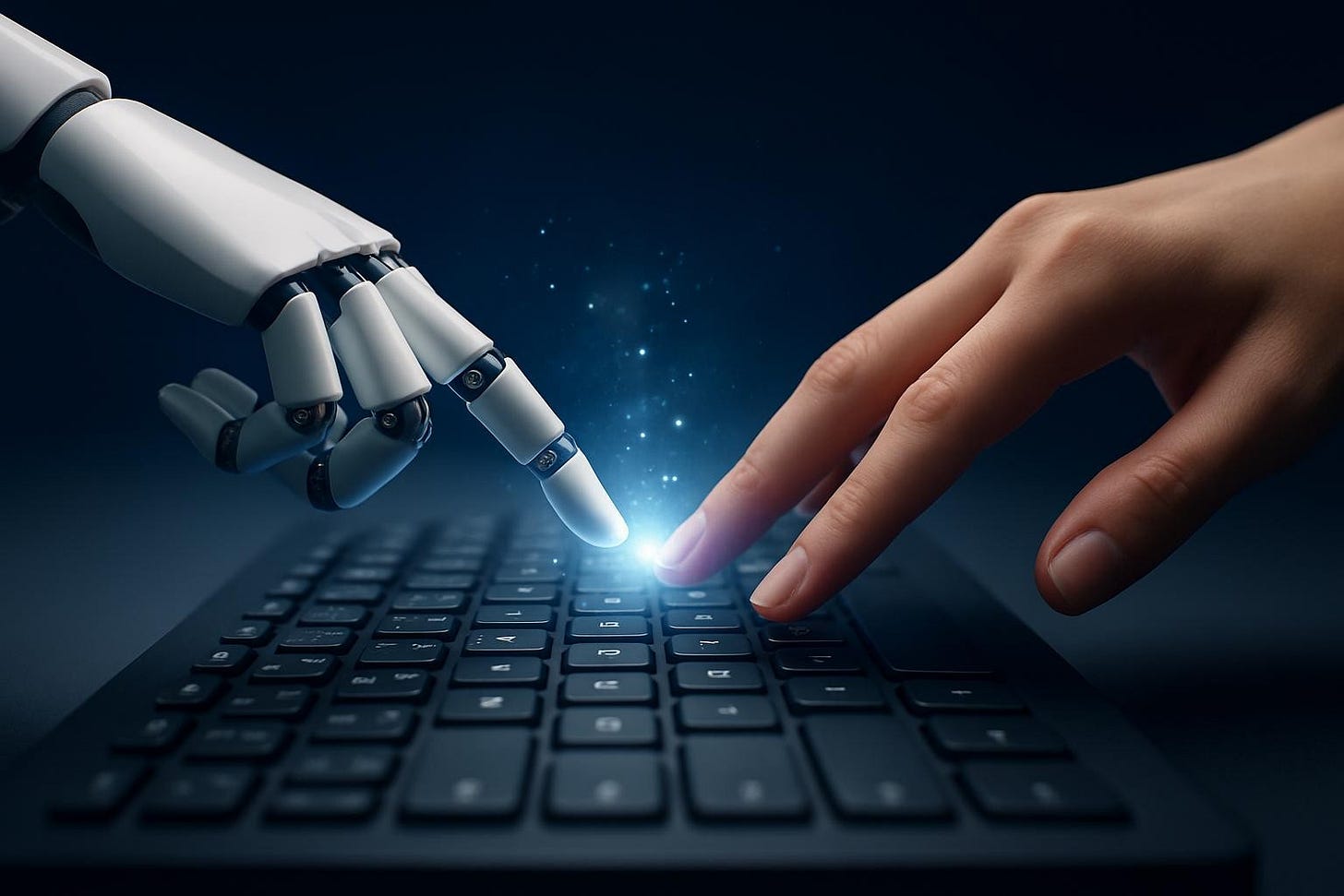AI Working Notes: Documenting my explorations at the interface of human and machine intelligence
Start reading here
Where I’ve Been
I’ve always had a thing for new ideas. Back in April 1984, I stood in line for an Apple IIc and couldn’t wait to get my fingers on that keyboard. Fifteen years later, I put up a website and found new ways to use it to market my books. I was blogging in the early 2000s and bought my first e-reader as so as they were available. So when AI arrived, it was no surprise that I was early to the table.
I knew the ironies. My books—like so many others—had almost certainly been swept up in the data used to train large language models (LLMs). And I understood the risks: bias, error, hallucination, plagiarism, deepfakes, surveillance, environmental cost, AI as the sorcerer’s apprentice. Like any technology, this one comes with baggage.
But when I looked closely, I found something else. Something more interesting than simple research and source confirmation. For me, the potential outweighed the pitfalls. So I opted in.
I’ve been using ChatGPT since 2023. At first, it was purely practical—fact-finding and checking for the research-heavy work I do. Historical details, botanical lore, what people wore and ate and argued about in the 1890s and the 1930s. The AI proved fast, flexible, and more tireless than any grad student I ever employed when I was on a university faculty.
Where I Am Now
That was the story—until a few months ago, when I read Ethan Mollick’s Co-Intelligence: Living and Working with AI. Mollick, a professor at Wharton and an active Substacker, reframes AI as more than just a tool. It can be a collaborator, he writes. A colleague. A teacher. A co-author. A kind of alien co-intelligence.
An alien co-intelligence?
Somebody like Data? Mr. Spock?
Tell me more—no, show me more.
So I went back to ChatGPT and began a different kind of experiment. Not just asking questions, but thinking with. Listening, reflecting, revisiting. Learning more about how this strange, synthetic mind works. How it changes the way I think, as a new tool can change the way we work, or a new colleague—especially someone from a very foreign place, a bilingual someone who thinks in a native language but communicates in ours—can change the way we see things.
That’s what this section of my Substack is about. AI Working Notes is where I chronicle the process—what I’m discovering, what I’m questioning, what I’m trying to learn with this uncanny partner.
I don’t know where this is going.
But that’s part of the story, isn’t it?
****
If you’re a writer using AI, leave a note and tell us how. Or if you’re wondering about it and have a question, I’ll be glad to respond, out of my own experience as a user—not an expert.



This is fascinating, Susan, and thanks for sharing it. I'm deeply curious about the energy costs of AI, as well as the different personalities of the different systems. I think I'm more inclined to use Claude from Anthropic because I'm not comfortable with Open AI as a company. I appreciate your embrace of new technology and willingness to dive deep!
I've used ChatGPT almost from the beginning, but not in an ongoing collaborative way as you are doing, Susan. One thing I need to know is whether there is any concern over stuff YOU write being available to OTHER people to COPY?? Does stuff you write get saved to the chatbot "memory"??